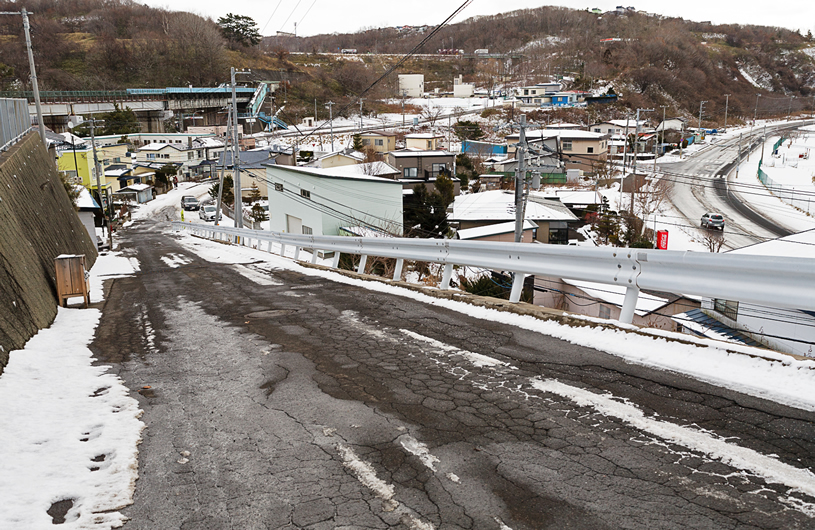
The slope from which Muroran's name originates. Matsuura Takeshiro, an explorer at the end of the Edo period, also walked down this slope and named the area "Mororan".

The slope from which Muroran's name originates. Matsuura Takeshiro, an explorer at the end of the Edo period, also walked down this slope and named the area "Mororan".
There are many slopes in Muroran, where the port seems to be surrounded by elevated land. Local historian, Fushiki Akira headed to JR Sakimori Station to see the slope from which the name of Muroran originated. At the bottom of the small slope is a sign that reads “The slope from which the name of Muroran originates”. The Ainu called this slope mo ruerani, meaning small downhill slope.

At the time, this slope formed part of the only overland route toward Date.
Long ago, ships set out to sea from the south side of this slope. Around 1805, a trading post run by the shogunate was established, and a row of shops developed.
During the Meiji period, this became "Mororan" (currently Sakimori-cho). However, when the port was opened in 1872, the base for development moved to the area around the current Muroran Chuo-dori, which became the "new Muroran", leaving Mororan as the "old Muroran".

Fushiki Akira is a former steelworker, like his father and grandfather before him.
"Nishikoji Slope" is not famous but is somehow strangely attractive. Its entrance is inconspicuous, but if you look back on the way up, you will see the port of Muroran at the bottom. Akutagawa Prize-winning author and native of Muroran, Yagi Yoshinori wrote in his book Umiake, "this district of Nishi Koji stretches over two sides of one slope: on the eastern side live the people in the sunlight; on the western side are those who live in clear contrast, without sunlight." A little further up the hill, beside the "23%" sign, my legs were tired and trembling.


Nishikoji Slope, with views of the port and factories

In the vicinity of the sign displaying a gradient of "23%"
Between Muroran Prince Hotel and Café Eikokukan is "Makunishi Slope", which leads to Mt. Sokuryo.

Makunishi Slope
